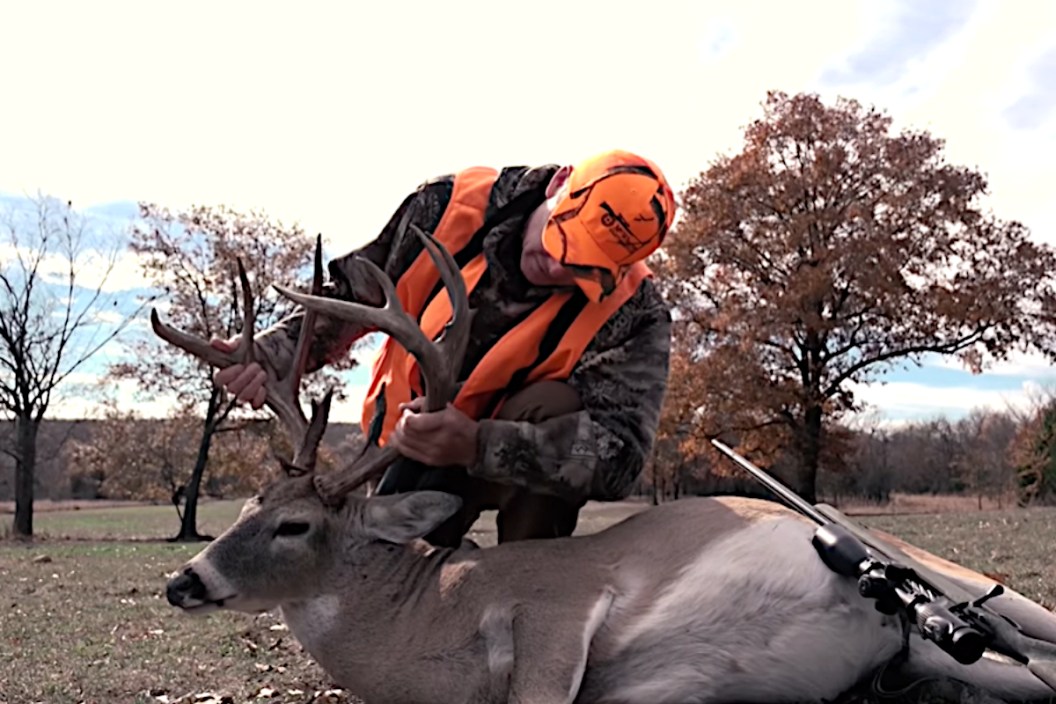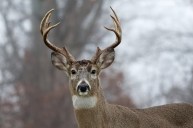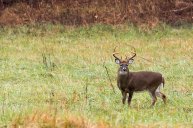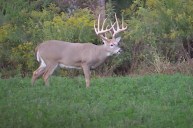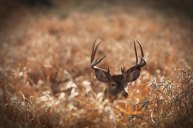Here's your guide to deer hunting in Oklahoma.
Planning deer hunting trip to the Sooner State this fall? Whether you're after whitetail deer or muleys with archery gear or a rifle, we're here to help. It is time to finally see this legendary deer population that keeps hunters returning year after year.
We'll go over purchasing your hunting licenses, good hunting areas and more.
This is everything you need to know to bag a big buck in Oklahoma this year.
Oklahoma Deer Hunting Licenses
Unlike many other states, the Oklahoma Department of Wildlife Conservation keeps things incredibly simple when it comes to licenses. You can buy them either online or over-the-counter. Note that you will get charged a $3 "convenience fee" if you buy online.
The good news is, if you're a resident, license fees are very affordable. Resident archery, antlered and antlerless muzzleloader and gun tags are all just $20. For youth hunters, the cost is just $10. You must also have an annual hunting license at a cost of $25.
For non-residents, you will need a standard hunting license. Oklahoma sells an annual, fiscal-year and 5-day license, so you have a choice depending on the length of your hunt. The cost breakdown for those licenses in order is $142, $176 and $75.
Once you have that, you can purchase a deer archery, deer muzzleloader or deer gun tags for $280. They lowered the price down from $300 a few years ago.
Oklahoma Deer Season Dates
Here are all the season dates for 2021 you will need to know in order to best plan your hunt this year.
Archery Season - October 1-January 15
Youth Deer Gun - October 15-17
Muzzleloader - October 23-31
Gun Season - November 20-December 5
Holiday Antlerless - December 18-31
We should also briefly mention bag limits. Archery season is the only one where you can harvest more than one antlered deer. In gun, youth deer, and muzzleloader, hunters are limited to one antlered deer. You can harvest up to six deer a season with no more than two being antlered in a given year.
If there is one thing we can say about deer hunting season in Oklahoma, it's that they keep their seasons and license systems very straightforward and simple. We can appreciate that. It makes planning a deer hunt so much easier.
What to bring
Oklahoma is a trophy buck state for whitetail hunting. Its location in the middle of the U.S. works in its favor for hunters.
You won't be dealing with weather conditions that are too extreme for this whitetail hunt. It generally only gets around 30 degrees at the coldest in the heart of winter from December through January, so super-heavy hunting clothing isn't really a necessity. If you're hunting in the early season, remember to get your deer on ice, cut up or to a processor as quickly as you can to avoid spoilage. The Sooner State can still see some 70-80 degree days well into October! That can make for some warm archery hunting, so make sure your broadheads are sharp and functional. You want to have short recoveries when the temperatures are high to avoid meat spoilage.
The rut generally peaks in Oklahoma sometime in mid-November. If you're going to be visiting at that time, it's not a bad idea to have a grunt call and rattling antlers handy. Fortunately, Oklahoma is loaded with big deer, which means many are ready and willing to respond to aggressive calling and rattling sequences if you time it right.
As far as method of take goes, Oklahoma is pretty wide open when it comes to options. For bow hunters, compounds, recurves and longbows are all fine but must have a draw weight of 30 pounds minimum. Crossbows have to have bolts at least 14 inches long with a 100 pound draw weight.
For firearms, you can use shotguns firing slugs, handguns with at least a 55-grain weight and four-inch barrel and centerfire rifles with a 55-grain weight. You can even use suppressors if you want. Muzzleloaders must be .40 caliber or larger for a rifle or pistol and 20-gauge or larger for a muzzleloading shotgun.
Another thing to keep in mind is that some parts of Oklahoma are flat and wide open. Sometimes trees for stands might be limited, especially in the western part of the state, which tends to be a lot of open plains. It's not a bad idea to have a pop-up ground blind that you can quickly set up if you just can't find a suitable tree for where the deer are moving.
Where to hunt deer in Oklahoma
Oklahoma is generally considered one of the top whitetail deer hunting states in the country. The deer herd is extremely healthy and monster bucks abound. The bad news is, finding a place to hunt a trophy whitetail can be a real challenge.
For public hunting opportunities, check out the Osage Wildlife Management Area. The good news? It's approximately 9,500 acres of public hunting opportunity for deer hunters. Osage is one of the most popular counties to hunt in the state and it often leads the way in number of harvests.
While that last part could be considered a good thing, the downside is it also means you'll likely run into some hunting pressure from other sportsmen and women.
The middle and eastern parts of the state tends to lead the way in number and size of harvests. The east has produced monsters like Micalah Millard's 179 7/8-inch McIntosh County buck. In the central part of the state, two years ago, Pontotoc County hunter Larry Wheeler lived a hunter's dream come true. Wheeler shot a 206 4/8-inch 25 pointer in a pecan grove one week, and then shot a 202 1/8-inch 34-pointer the following week in the same place!
But really, any area of Oklahoma is good for trophy bucks. In 2017, U.S. Army Sergeant Travis Ocker shot a 28-pointer scoring 245 2/8 while stationed at Fort Sill in Comanche County. For the nearest public hunting to where that beast was shot, look at the Wichita Mountains Wildlife Refuge. Note that because it is a federally-owned area, you do have to apply for a draw to hunt there.
Another central public hunting option is the Lexington Wildlife Management Area south of Oklahoma City. It has a lot of deer, but there is a good amount of hunting pressure to deal with. In the eastern part of the state, check out the portion of the Ouachita National Forest that spills over the Arkansas border into Oklahoma.
Beyond National Forests and Wildlife Management Areas, there are other options. Check out the Oklahoma Land Access program (OLAP), which incentivizes landowners to open their land to public hunting. Most of these areas are in the western part of the state.
Just remember that the landowners completely control access, and they can shut it off at any time they desire. Have a back-up plan if you're planning to hunt one of these areas from out of state.
If all else fails and you can't find an area of public land you like, you might have to "pay to play," so to speak. There is no shortage of Oklahoma outfitters scattered across the state that will guide you and give you access to great private land, complete with food plots, for a fee of course. Hunts are often either guided or semi-guided, and run anywhere from $2,000-5,000. It may be pricey, but hiring a hunting guide could help put you on the buck of a lifetime.
A great place to take a trophy
If you're looking for a true monster whitetail buck, you really can't go wrong with hunting Oklahoma. In addition to the big game opportunities, you could also potentially combine your adventure with an antelope or fall turkey hunt for more value.
Every hunting season, multiple Boone and Crockett class deer fall in the Sooner State and plenty of others escape to grow another year. Maybe this year you'll be the next lucky hunter to down an Oklahoma monster!
Products featured on Wide Open Spaces are independently selected by our editors. However, when you buy something through our links, we may earn a commission.
For more outdoor content from Travis Smola, be sure to follow him on Twitter and check out his Geocaching and Outdoors with Travis YouTube channels.
NEXT: AN OUTSIDER'S LOOK AT MICHIGAN DEER HUNTING
WATCH
